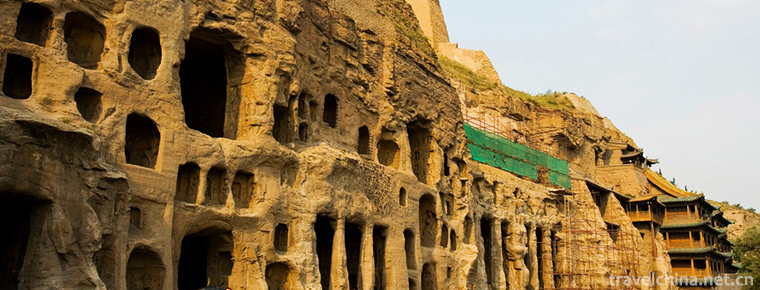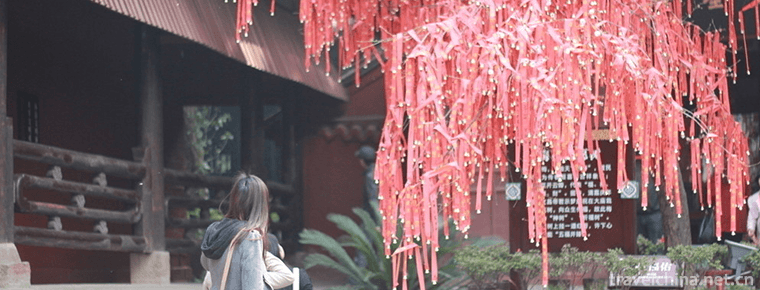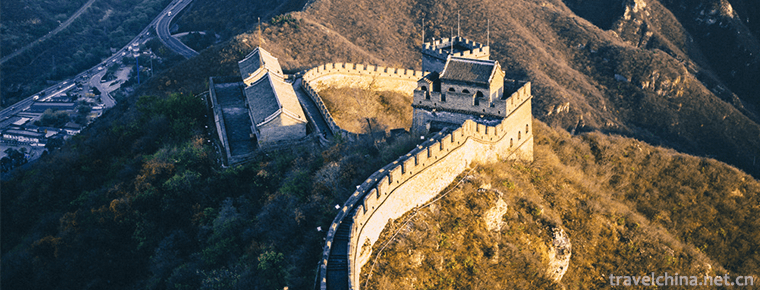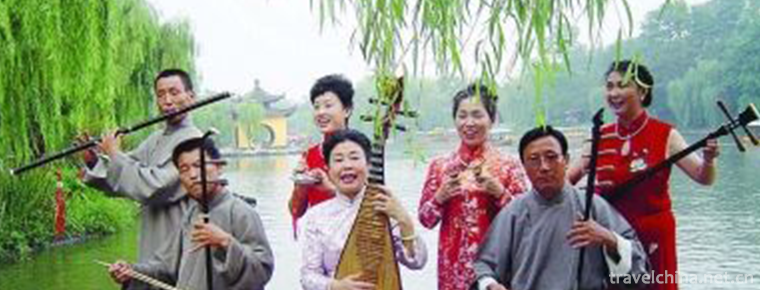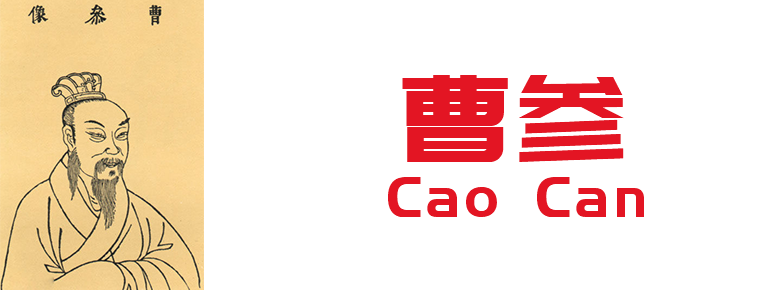yuyuantan park
yuyuantan park
Yuyuantan Park, AAAA grade scenic spot, is located in Haidian District. East Gate is adjacent to Diaoyutai State Guest House; West to West Third Ring Road is separated from CCTV Tower; South Gate is north of China Century Tan and north to Naval General Hospital.
Yuyuantan Park was named in 1960. As of 2015, the width of East and West is 1820 meters, the length of North and south is 1106 meters, and the planned total area is 136.69 hectares. Among them, 61 hectares of water area and 74.44 hectares of green land (including lawn) have been built. The green coverage rate is over 95%, and there are about 190,500 plants in the garden.
The main scenic spots of the park are cherry garden in the west, water diversion Lake Scenic Area in the North (partially built), Zhongshan Island in the South and Liuchun Garden in the east. Every spring, the park holds a cherry blossom appreciation party.
Historical Evolution
In the Jin Dynasty, Yuyuantan Park was a scenic resort in the northwest suburbs of Jinzhong Capital. In the Liao and Jin Dynasties, feudal scholars and officials pursued the reclusive and elegant scenic spots such as "Nurturing Forest Springs" and "Diaoyu River Melody".
In the thirty-eighth year of Qianlong reign of the Qing Dynasty (1773), the lake was dredged to divert water from the river by the newly opened Xiangshan Mountain. A sluice gate was built at Xiakou to store and discharge the lake water, and the water diverted from the Sanli River to the moat at at Fuchengmen. There is a palace in the east. The back lake is silted up and overgrown with weeds. After liberation, with the Yongding River diversion project, a new lake of about 10 hectares was dug on the edge of the old Hunan Province, which looks like a gourd and is named Bayi Lake. There is an experimental hydropower station downstream. The East and West ends of the new and old Erhu lakes are connected, which can divert and store water.
On August 4, 1958, Yuyuantan, the former experimental farm of Agriculture and Forestry of Beijing Agricultural University, was handed over to the Municipal Landscape Bureau, which was taken over by the Greening Department on the instructions of Liu Zhonghua, Director of the Municipal Landscape Bureau.
In February 1959, after the establishment of the Fisheries Office of the Municipal Landscape Bureau, Yuyuantan Water Surface was utilized to carry out aquaculture business such as fish culture and reed cultivation.
On January 12, 1960, the Greening Department submitted 27 small parks and green spaces under its jurisdiction to the Municipal Landscape Bureau. They were designated as Yuyuantan Park, which was officially opened to the outside world by setting up a sign. In April, the Municipal Landscape Bureau established the Yuyuantan Park Management Office in accordance with the instructions of the Beijing Municipal Committee. On July 22, the seal of Yuyuantan Park Management Office of Beijing Garden Bureau began to be used. At the end of September, the aquaculture Office of the Municipal Garden Bureau handed over the management of the water surface of the park, aquaculture and fishing areas to the greening brigade.
In 1961, the water surface of the parks under the unified administration of the Fisheries Office carried out fish farming business. The water surface of the park is once again assigned to the aquaculture office. A fish farming class consisting of 10 personnel has been set up. Apart from surface aquaculture, the operation of other industrial and administrative organs in the park is still under the responsibility of a large team from the Greening Department.
On March 18, 1963, Yuyuantan Park's tree maintenance, garden sanitation, management services and aquaculture business were assigned to the leadership of the aquaculture office and listed separately.
On April 27, 1964, the Fisheries Office of the Garden Bureau was abolished, and the two parks of Yuyuantan and Zizhuyuan were merged to establish the Yuyuantan Zizhuyuan Park Management Office. The management office is located in Zizhuyuan Park. Yuyuantan Park, as a team of the management office, arranges more than 20 employees for daily management. "Yuyuantan Zizhuyuan Park Management Office" lasted for seven years.
On October 16, 1978, two comrades Fu Shouqian and Feng Jie of the Municipal Planning Bureau jointly wrote to the Beijing Municipal Committee, pointing out that there are serious problems in the current management of Yuyuantan Park. It is urgent to set up a Park Management Office under the leadership of the Municipal Landscape Bureau.
On February 26, 1979, the Beijing Revolutionary Committee decided that Yuyuantan Park should be managed by the Municipal Water Conservancy Bureau. On March 15, the Yuyuantan Park Management Office of Beijing Garden Bureau was officially handed over. On April 11, the seal of "Yuyuantan Park Administration Office of Beijing" began to be put into use. The organization of the park gradually formed and entered a relatively normal period of development.
In March 1980, the office meeting of the Municipal Committee decided to build Yuyuantan Park into "Yuyuantan Children's Park". A leading group was set up and corresponding planning and design were carried out for this purpose. On May 4, Wang Renzhong, Secretary of the Secretariat of the Central Committee of the Communist Party of China, announced the decision of the Municipal Committee to transform Yuyuantan Park, a 160-hectare park, into a youth activity base at a conference to commemorate the 61st anniversary of the May 4th Movement.
On December 28, 1982, the National Honorary Chairman Foundation of Song Qingling held its first meeting at the Beijing Council in the Great Hall of the People. At the meeting, it was decided to build Song Qingling Children's Science Park in Yuyuantan Park.
On September 15, 1983, Liao Xiangchun, Deputy Secretary of the Party Committee of the Municipal Landscape Bureau, announced at the general meeting of all the staff and workers of the park that "the Yuyuantan Park Management Office will be revoked from now on and the Preparatory Office for the Song Qingling Children's Science Park in Beijing will be established." The Preparatory Office is still under the unified leadership of the Municipal Landscape Bureau.
On December 4, 1986, Yuyuantan Park was under the leadership of the Song Qingling Foundation.
Yuyuantan Park Management Office was restored on November 24, 1988. The seal of "Yuyuantan Park Management Office" and "Song Qingling Children Science Park Preparatory Office" are used simultaneously, and the use scope of the seal of "Song Qingling Children Science Park Preparatory Office" is narrowed. Since then, the ownership of the park management system, which has been suspended for six years, has been clarified.
Around 1990, the park began to organize mountains and rivers on a large scale. Fourteen varieties were introduced from Northeast China, Shandong and other provinces, and more than 2,000 cherry blossoms were planted in the park.
During the tree planting activities for the 30th anniversary of Japan-China friendship in 2002, new cherry varieties such as Sichuan, Nandian, Taibai and Meijian were planted.
In 2001, it was awarded AAA class scenic spot.
In 2010, it was awarded AAAA level scenic spot.
Location Scope
Yuyuantan Park is located in Haidian District. The gate is adjacent to Diaoyutai State Guest House; the Third Ring Road from west to west is separated from the CCTV Tower; the south gate is just north of the Century Temple of China and north of the Navy General Hospital. East-west width 1820 meters, north-south length 1106 meters, the total planned area is 136.69 hectares, including 61 hectares of water area, 74.44 hectares of green space (including lawn).
Major Scenic Spots
Cherry Garden
Cherry Garden is located in the northwest of the park, adjacent to the bustling West Third Ring Road. It was built in 1989. It is a garden characterized by cherry blossoms, with a total area of 250,000 square meters. In the spring of 1973, cherry trees were planted near the mountains and rivers to symbolize the friendship between China and Japan. Around 1990, the park began to organize mountains and rivers on a large scale. Fourteen varieties of cherry blossoms were introduced from northeast and Shandong provinces, and more than 2000 cherry blossoms were planted in the park. At the entrance of Ximen, there are stone carvings with Bingxin's relatives. Near Ximen, there are many cherry trees that have been adopted and planted. There are many scenic spots in the garden, such as "Cherry Begonia Spring Dawn", "Cherry Island Autumn Water", "Liuqiao Yingyue" and "Deep Yunxi". On the east side of the cherry garden, there is a water Pavilion called "Oriole Garden". Although Yoshino Dyeing Jing is a single white flower, she can grow into a big tree by adjusting the supplementary planting. There are more than ten varieties of cherry blossoms in Cherry Garden, such as Shan Cherry, Yanjing Jiye, Bazhong Hongdao, Hangzhou Zao Cherry, Guanshan, Yiye, Puxian Elephant, Songyue, Youming, Tulip and so on. The total number of cherry blossoms is nearly 2000.
Liuchun Garden
Located in the east of Yuyuantan Park, Liuchun Garden covers an area of 16300 square meters and was built in 1980-1983. Designed for Grand Master Sandalwood. The gardens are well-structured. By using the gardening technique of wishing to carry forward the first restraint, the grille fence will gather the faint spring light in the gardens, surrounded by halls, flower racks, central pavilions, frescoes and sculptures. The center is an open lawn, surrounded by distinct evergreen trees and tall trees. The flowers and shrubs with different postures and abundant seasons make the flowering period of the gardens connected, which will make the gardens stay in spring. Living in the plant landscape, Yuyuantan is the earliest garden with complete facilities.
Zhongshan Island
Zhongshan Island area refers to the southwest scenic area of the park. It is about 900 meters long and 80 meters wide. It is the west part of the mountain ridge running through the East and West on the south side of the park. The barrier formed by several excavations and dredging of rivers and lakes in history is between Yuyuantan Lake and Bayi Lake. The original locust forest on the mountain is mostly left over from the construction of Agricultural University. Because it is located in the middle of the park, it is called Zhongshan Island.
Yuyuan Pavilion is located at the eastern end of Zhongshan Island. It is an antique four-cornered pavilion built on the earth hill. It is one of the few Chinese-style buildings in the park. It was built in 1985. It is the commanding height of the whole park. It is overlooked by the pavilion and offers a panoramic view of the north and south. The pavilion was renovated in 2004 and solemnly listed in the south in 2005. The inscription "Yuyuan" was officially named "Yuyuan Pavilion" and inscribed for Meng Lingfang. In 2007-2008, the surrounding terrain and plants were reorganized to make it more prominent.
The Chinese Young Heroes Monument on the west side of Yuyuan Pavilion was built in 1987 and officially completed in 1990. The main monument designed by Feng He is made of stainless steel. It and the sculptures around it show the history of children's welcome to the liberation of the whole country. It unifies the spiritual outlook, heroic behavior and art of children in different periods, and shows the vigorous and upward appearance of children very prominently. In 1990, 1993, 1999 and 2007-2008, the park successively carried out environmental renovation of the whole area, breaking the mountain body and opening up three channels, making Bayi Lake, West Lake and East Lake connected with the Cherry Garden landscape, adding a large number of pavement and squares.
Yuan Xiang Yuan
Yuanxiangyuan scenic spot is located in the southeast central area of the park, west of Liuchunyuan. It is a key scenic spot built after the relocation of Wanghailou Hotel and Park Management Office in 2005. It was built in stages from 2006 to 2009. The original planning name was taken from "Xiangyuan Yiqing" of Yonghe. After several adjustments, the architecture was formed. However, the landscape of the courtyard changed greatly. The lotus bank along the lake and the lotus pond in the central courtyard were cancelled, which became the core area with many cultural and service functions.
Diversion Lake
The diversion lake is in the northeast of the park. There is a quiet lake area. It used to be a forest hoarding area with abundant vegetation. With the construction of the park ring road, this low-lying forest area, covering 9.5 hectares, was reclaimed and transformed on a large scale in 1997 and 1998. The water system of the scenic spot came from the East Lake and went to Diaoyutai. The northern terrain is relaxed and open, mainly cedar, ginkgo and tall poplar trees, scattered in the open lawn, along the park around the Lake Road north, coupled with spring flowers and shrubs such as Begonia, has a very sparse forest grassland style in the 1990s.
Practical information
Transport line
East Gate
Dongmen is located at the eastern end of Sanlihe Road, adjacent to Diaoyutai State Guest House (and Diaoyutai Hotel) and West Chang'an Street. It can take 320, 114 (trolleybus, 717, 727) routes, Muxidi North Station, 13, 21, 37 and 65 routes to Sanlihexikou Station, or take the first-line subway to Muxidi Station and then go northward. There is no sufficient parking space in front of the gate. It is suggested to take bus or taxi. The car can swim to the West gate.
West Gate
As opposed to the CCTV Tower, it can take 300, 323, 374, Te8, Yuntong and other routes to arrive (from south to north: Bayi Hubei Station, from north to south: Fucheng Road Station) and get off. From the princess's grave to the north, we should leave the main road ahead of time. There is a parking lot on the north side of the West gate. From north to south, you can park under the space bridge in the TV tower.
South Gate
It can take a large number of Chang'an Street bus lines such as No. 1 and No. 4, or take the subway at the north entrance of Junbo Station to the next century altar.
North Gate
Located on the east side of Fucheng Road Space Bridge, the west side of Naval General Hospital is southward. You can get off at Horse Temple or Baiduizi Station on Routes 121, 846 and 37.
Self driving route
From the princess's grave to the north, we should leave the main road ahead of time. There is a parking lot on the north side of the West gate. From north to south, to walk under the space bridge, you can park your car in the TV tower.
Opening Hours
December-March of the following year: 6:30-19:00 (20:30 Quiet Garden)
April-May: September-November: 6:00-20:30 (21:30 Quiet Garden).
June-August: 6:00-21:30 (22:30 Quiet Garden)
(Note: 22.30 on August 22, 2015 - 12 a.m. on the next day; 22.30 on September 2 - 14 a.m. on the next day.)
Ticket information
Adults: 2.00 yuan per person
Student vouchers: 1.00 yuan per person
Monthly ticket: 4.00 yuan per person (the last four days of the month at the end of each month), price concessions, no identity restrictions on the purchaser
During the Cherry Blossom Festival: 10 yuan/person (during the Cherry Blossom Festival, students can still buy half-price student tickets: 5 yuan)














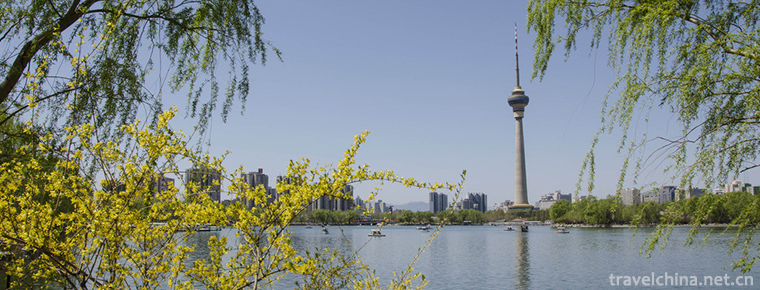
-
Chinese Shared bicycle
Shared bicycle refers to the bicycle sharing service provided by enterprises in campus, subway station, bus station, residential area,.
Views: 183 Time 2018-11-13 -
RenminbiChinese yuan
The legal currency of the People's Republic of China is Renminbi. The People's Bank of China is the competent organ of the state in charge of the management.
Views: 197 Time 2018-11-13 -
Online Shopping
Online shopping is to retrieve commodity information through the Internet, and send out shopping requests through electronic order forms, then fill in the number .
Views: 218 Time 2018-11-13 -
Yungang Grottoes
Yungang Grottoes is located in the southern foot of Wuzhou Mountain, 17 kilometers west of Datong City, Shanxi Province, northern China..
Views: 243 Time 2018-11-24 -
Huangguoshu Waterfalls Scenic Area
Huangguoshu Scenic Spot is a key national scenic spot, located in southwest Guizhou Province, 128 kilometers away from Guiyang City, the capital of Guizhou Province.
Views: 167 Time 2018-12-12 -
Qiqu Mountain Scenic Area
Qiqu Mountain Scenic Spot is located about 9 kilometers north of Zitong County, Mianyang City, Sichuan Province. It is located at the southern end of Jianmen Shudao Scenic Spot..
Views: 137 Time 2018-12-17 -
The Gu Guan Great Wall
Guguan Great Wall is located in Xinguancun, Pingding County, Shanxi Province, on the western side of Taihang. It starts at Niangziguan Jiayugou in the north and reaches Baihui Village in the south..
Views: 118 Time 2019-01-12 -
Binyang Gulong Festival
Binyang Gulong Festival is a unique traditional festival in Binyang County, Guangxi. It is a comprehensive folk festival that integrates Han and Zhuang cultures..
Views: 219 Time 2019-04-04 -
Xujiaquan
Xujiaquan, a traditional boxing method, originated in Tongji Village, Xintai City, Shandong Province. Xujiaquan originated in Yongzheng Period of Qing Dynasty and was created by Xu Shengcai, Gaozu of .
Views: 168 Time 2019-07-09 -
Yangzhou Qingqu
Yangzhou Qingqu, also known as "Guangling Qingqu" and "Weiyang Qingqu", is a form of Musical Singing developed on the basis of popular songs and minors popular in Yangzhou during t.
Views: 126 Time 2019-07-10 -
Legend of Yin Jifu
The "Yin Jifu Legend" which was listed as the first batch of intangible cultural heritage in Hubei Province, made a sensation forum about "Chinese poetry ancestor, Taishi Yin Jifu of th.
Views: 181 Time 2019-07-13 -
Cao Can
Cao Can(? - 190 BC) , Han nationality Peixian people In the Western Han Dynasty, the founding fathers and famous generals were the following. Xiao He Later, the second dynasties in the Han Dynasty wer.
Views: 286 Time 2019-09-15



